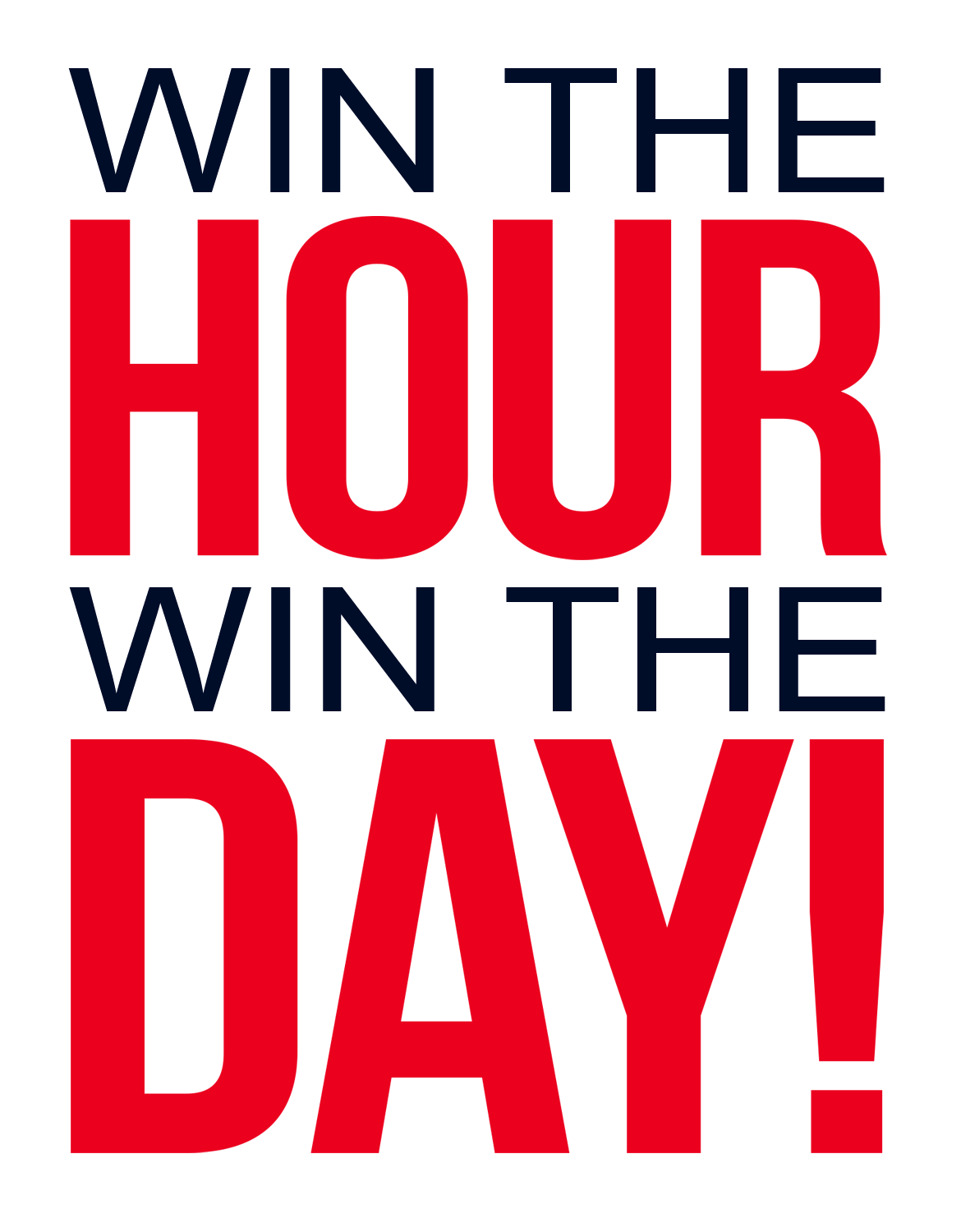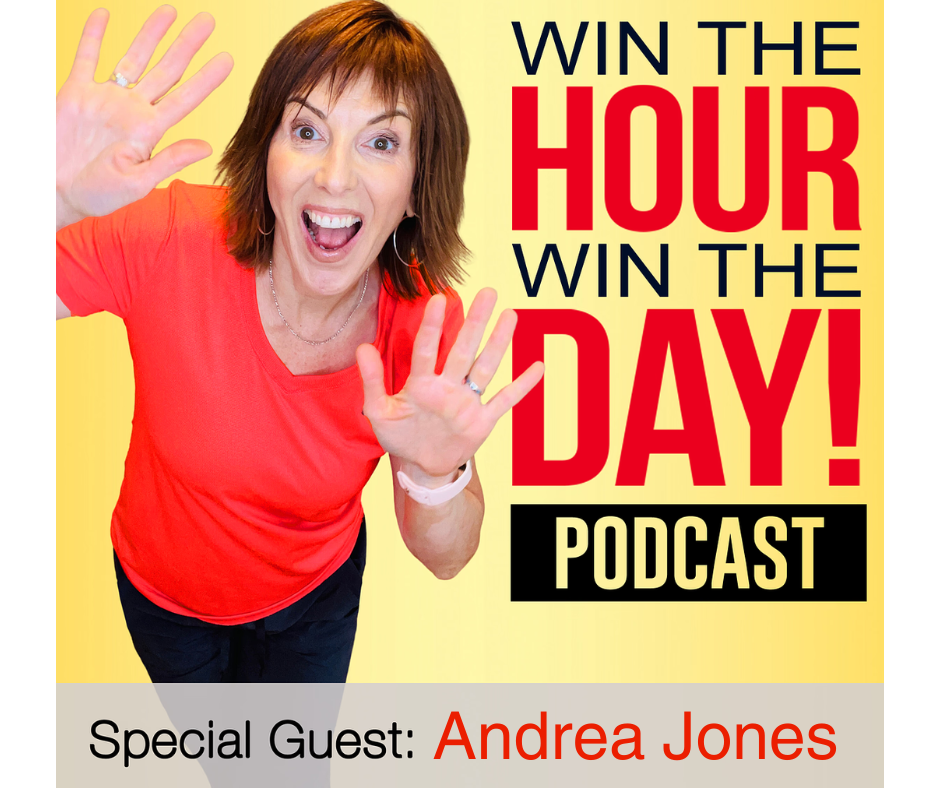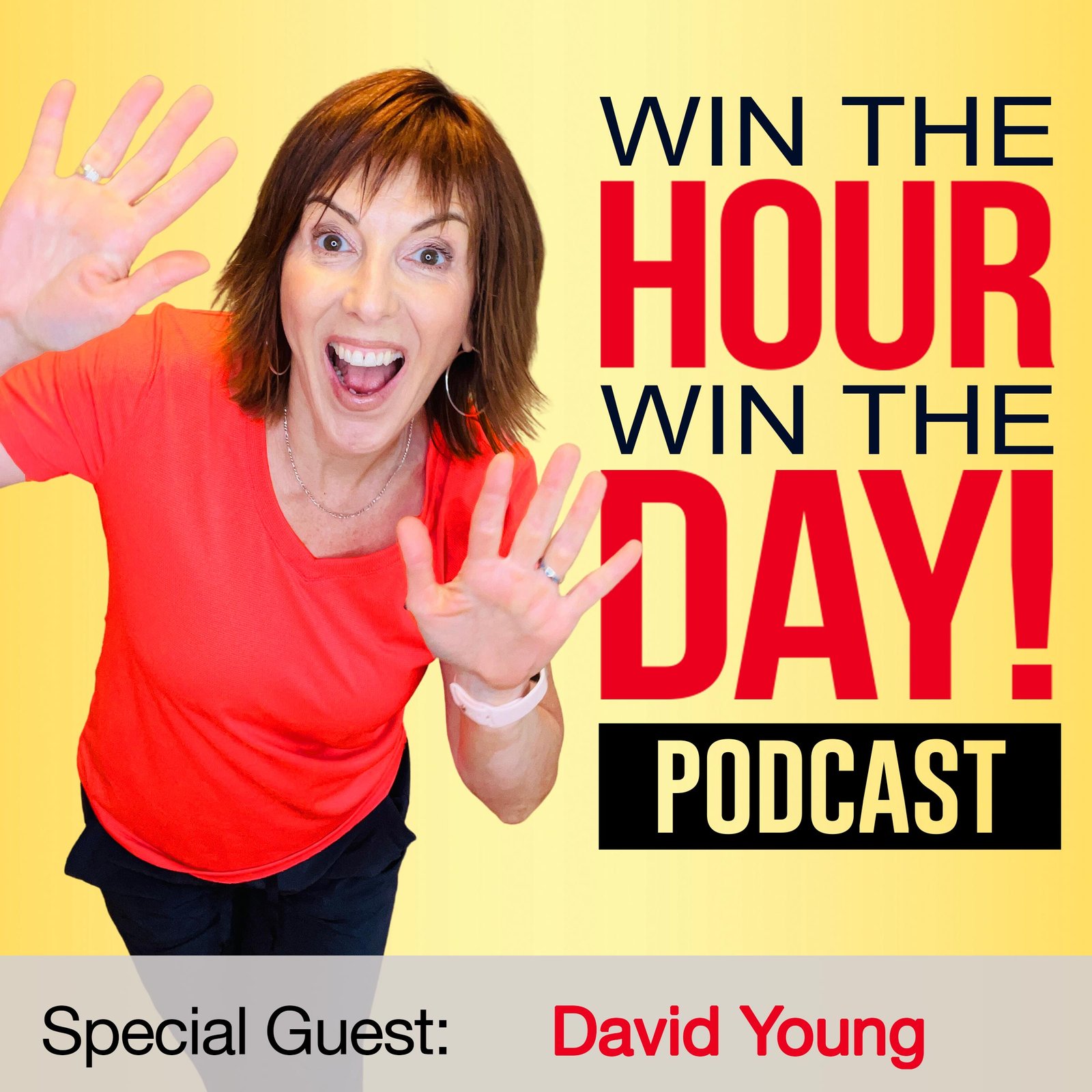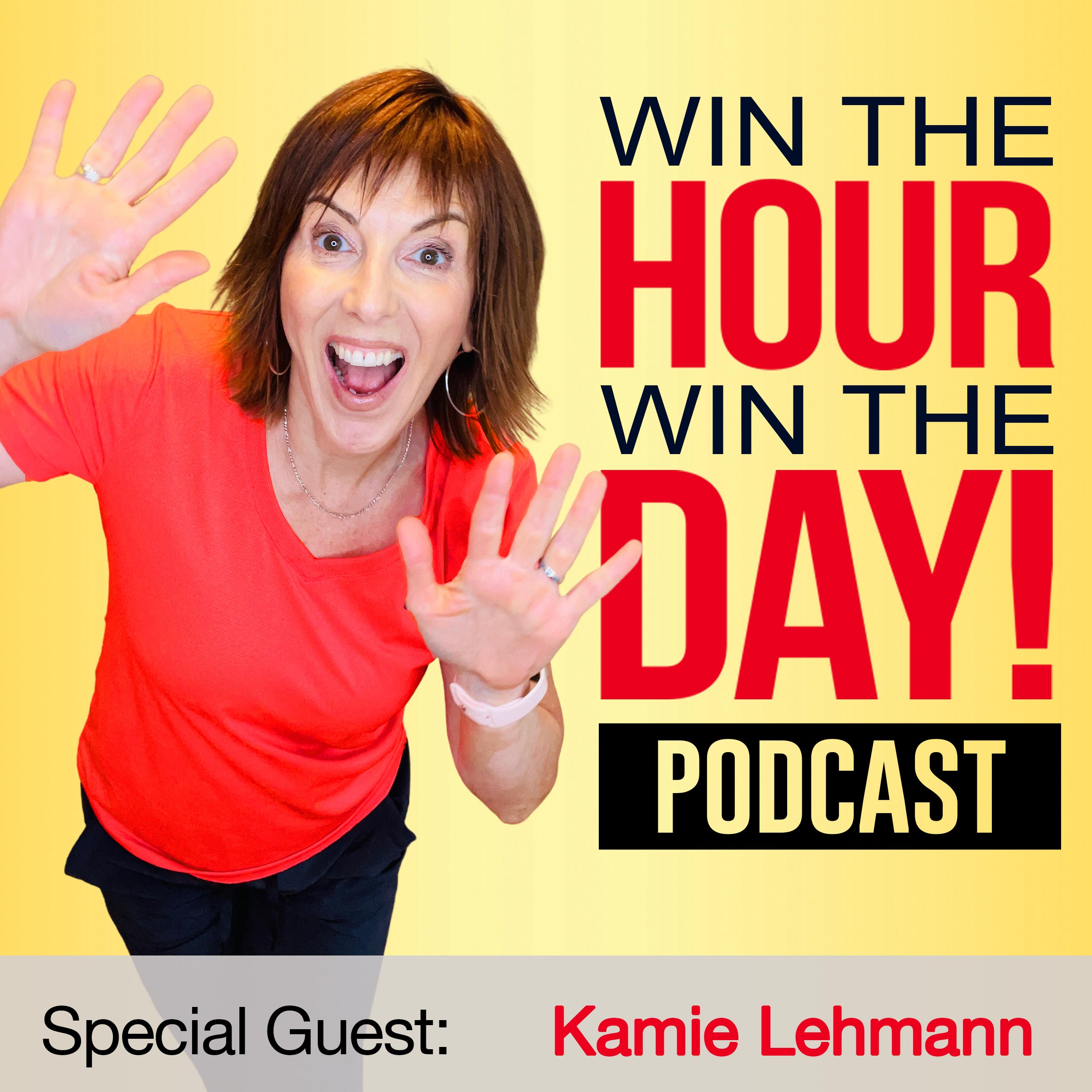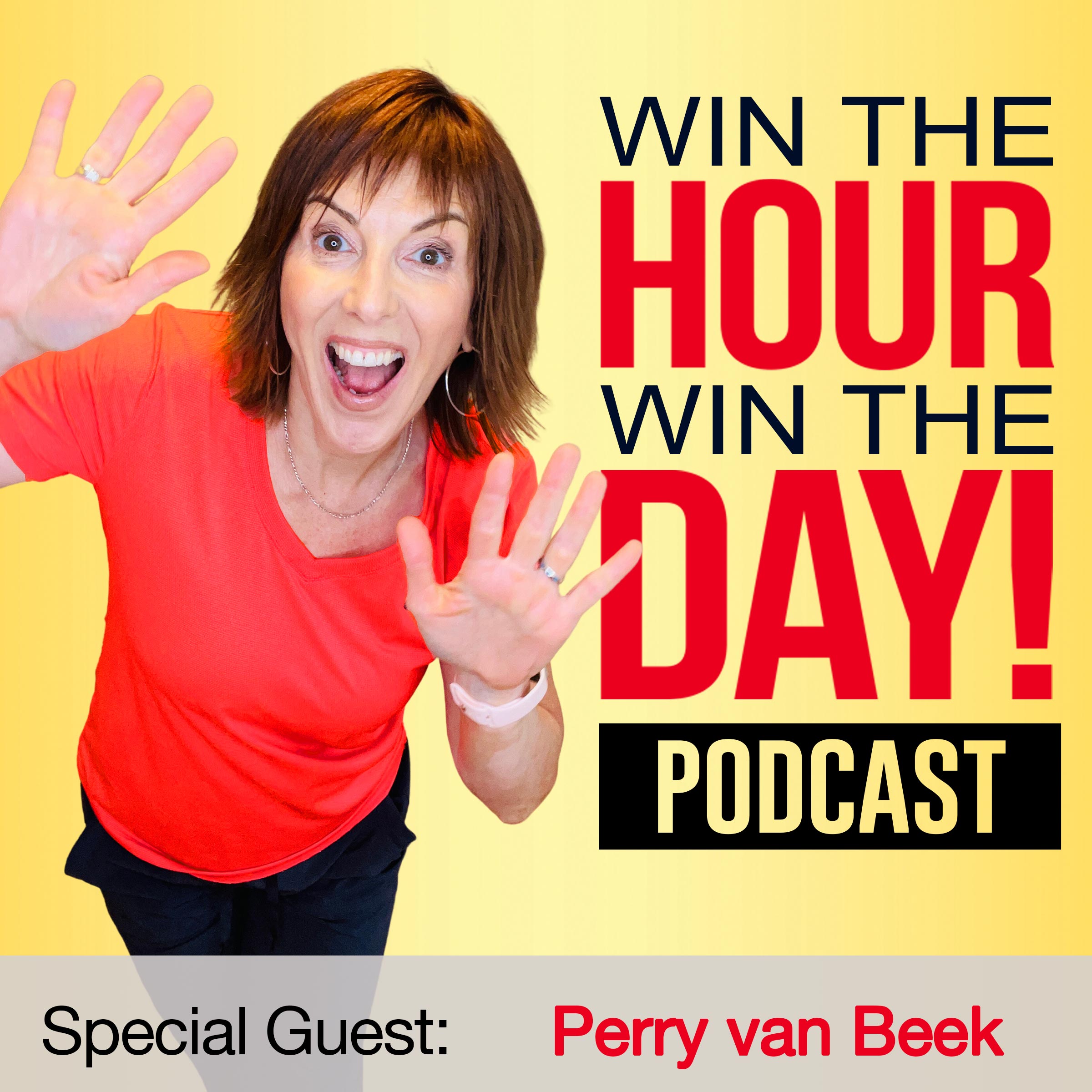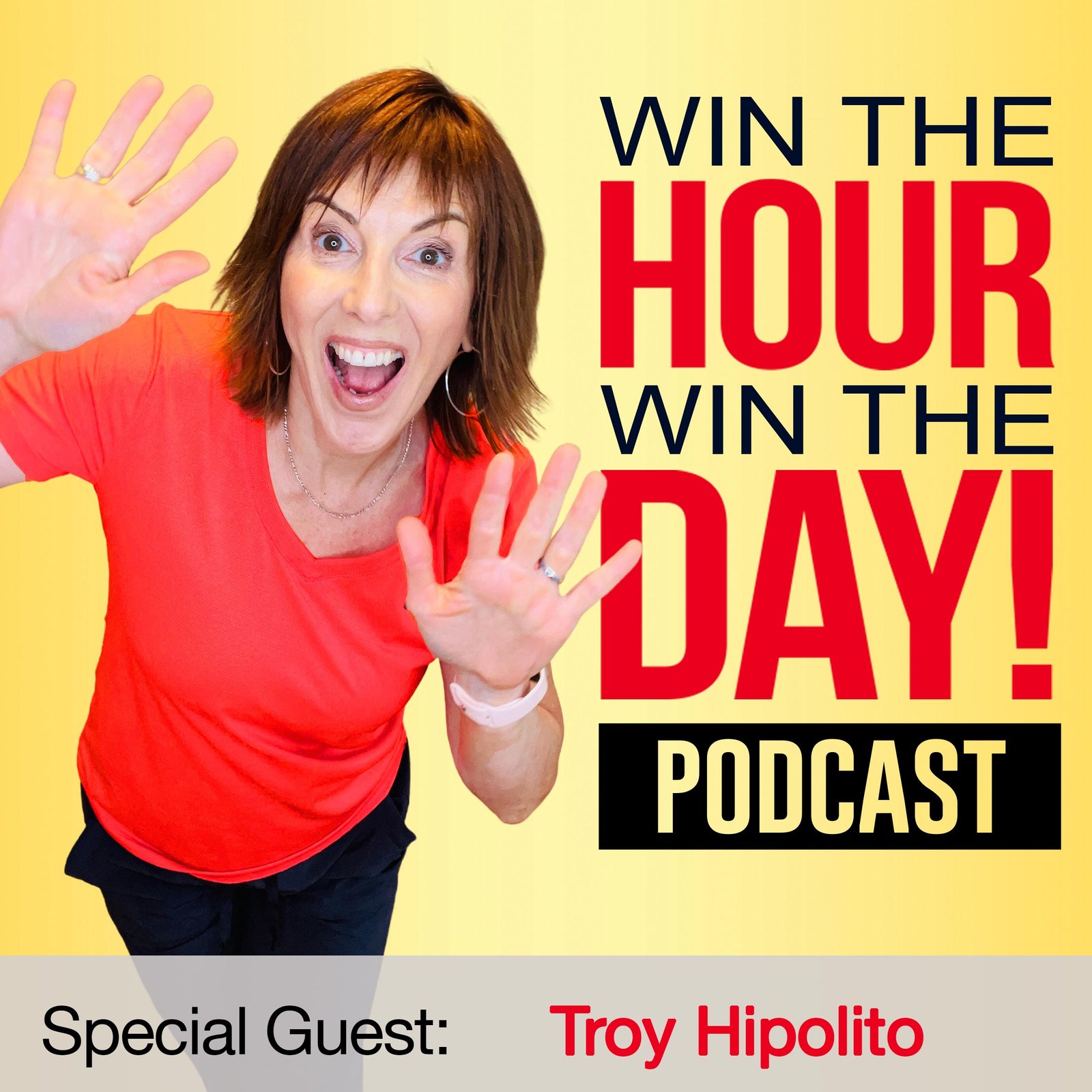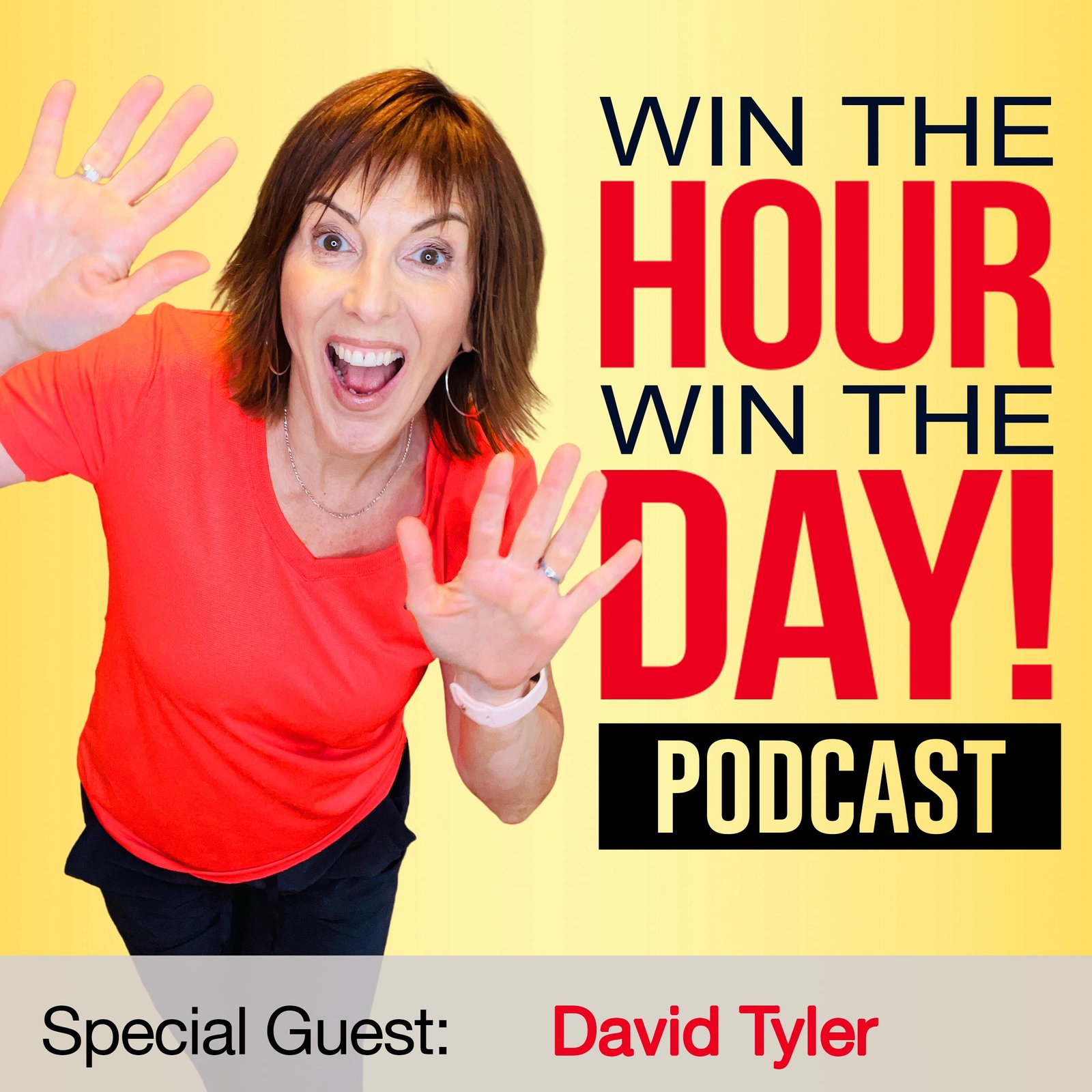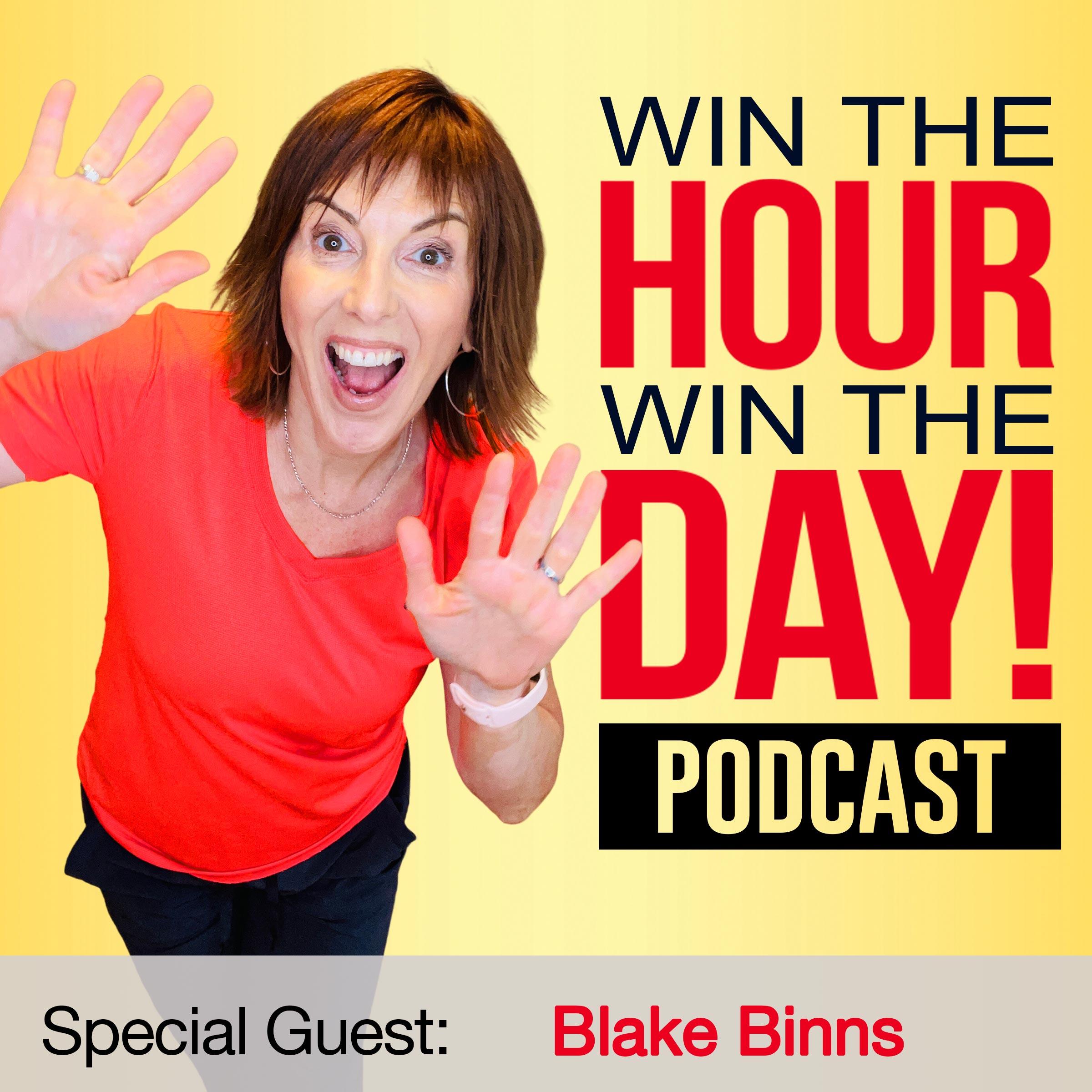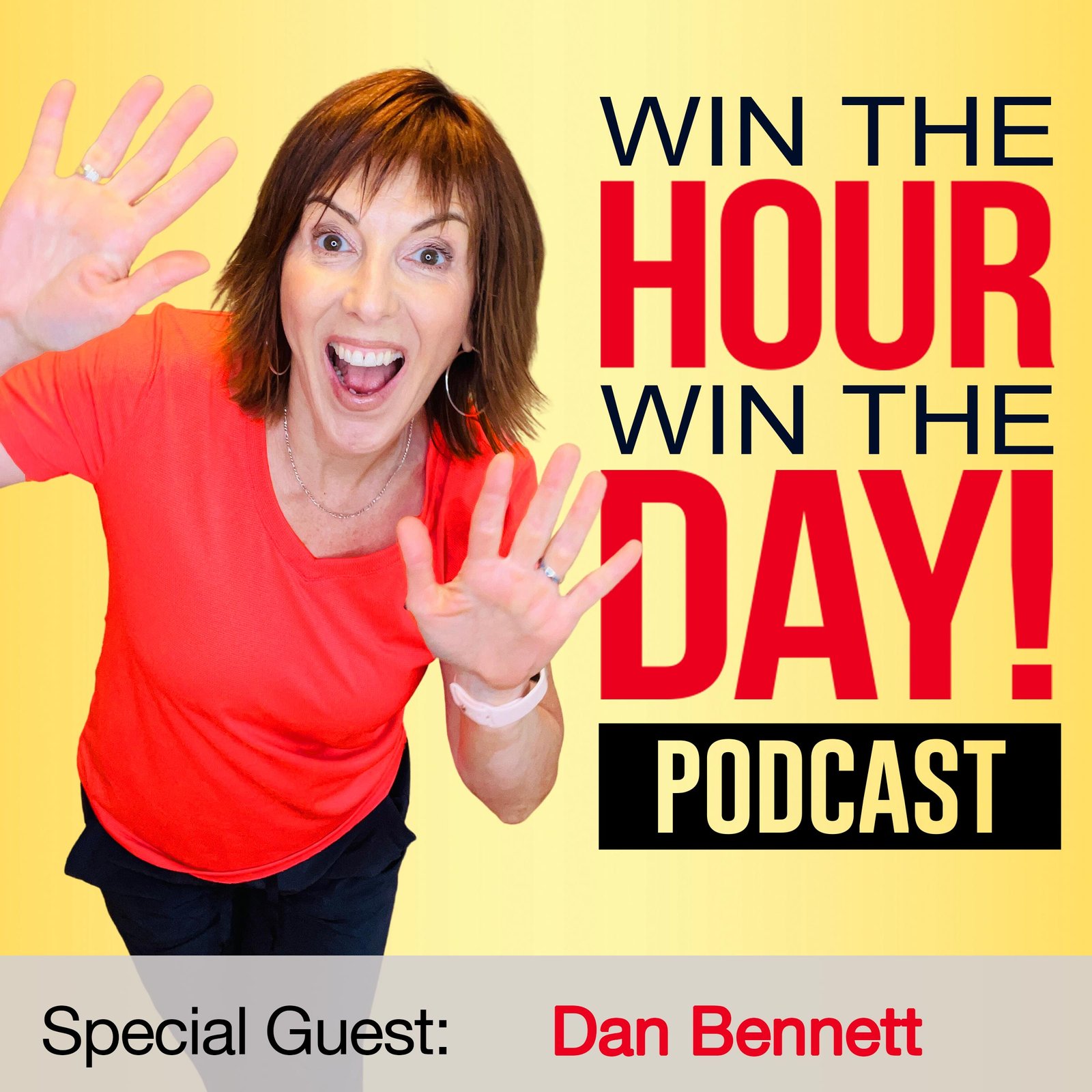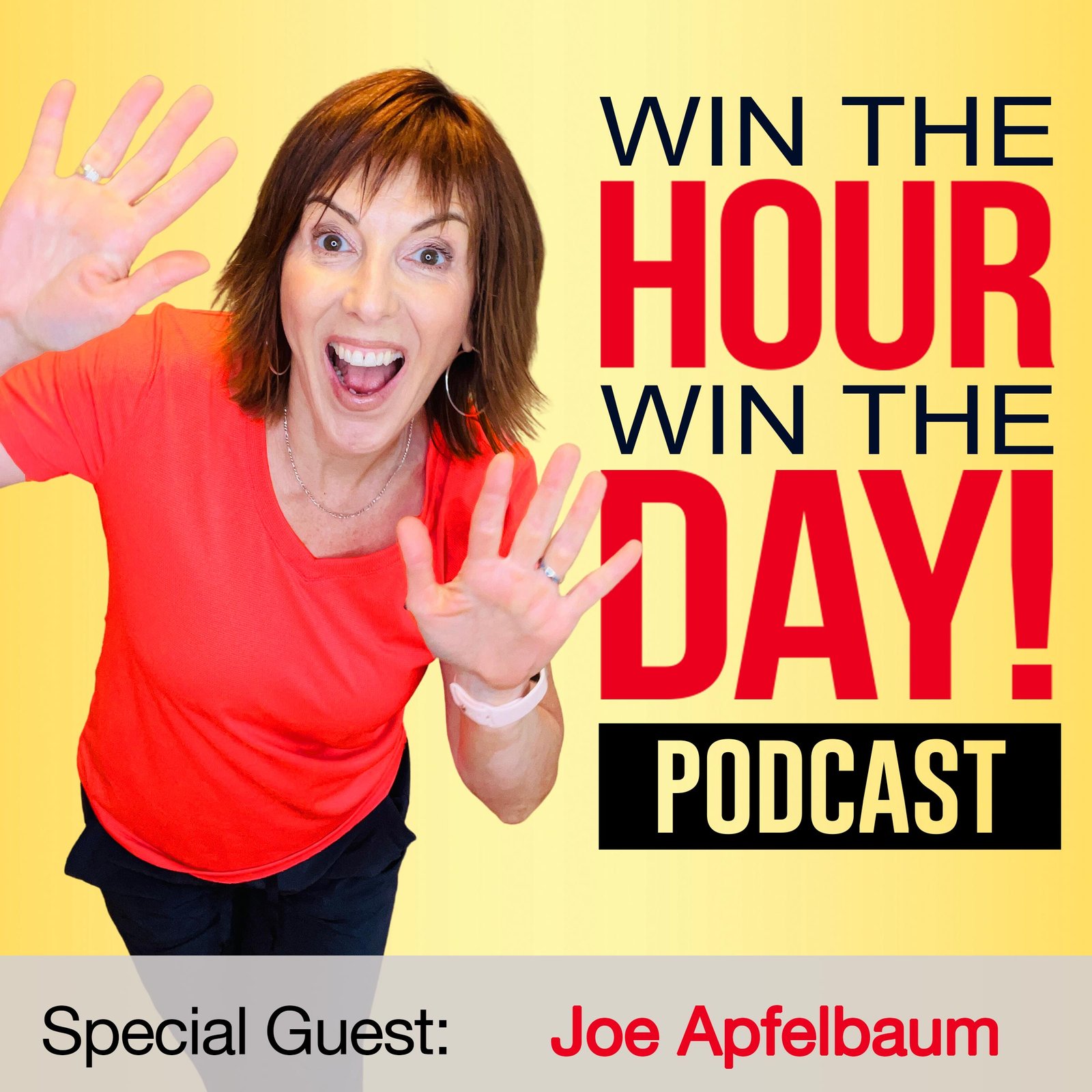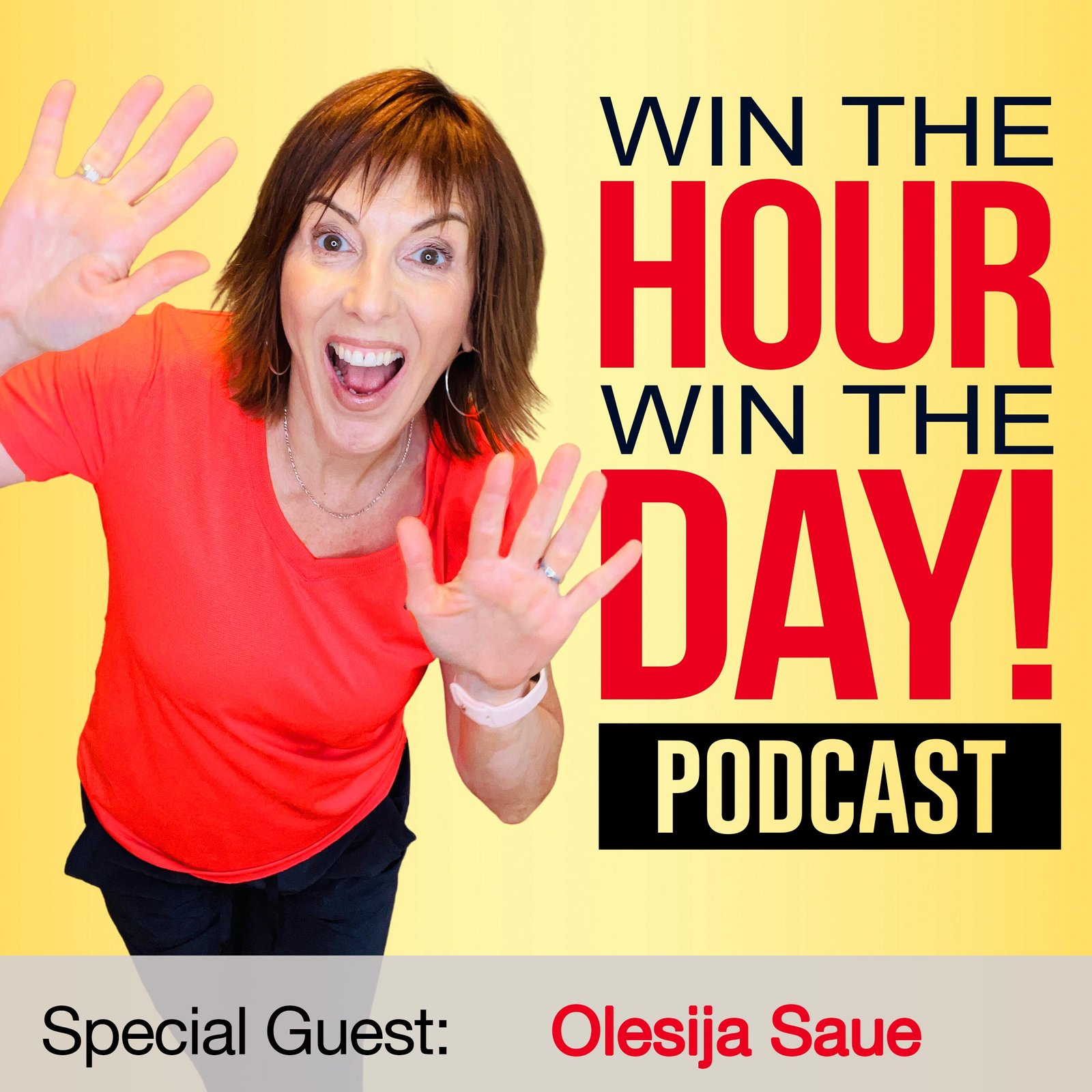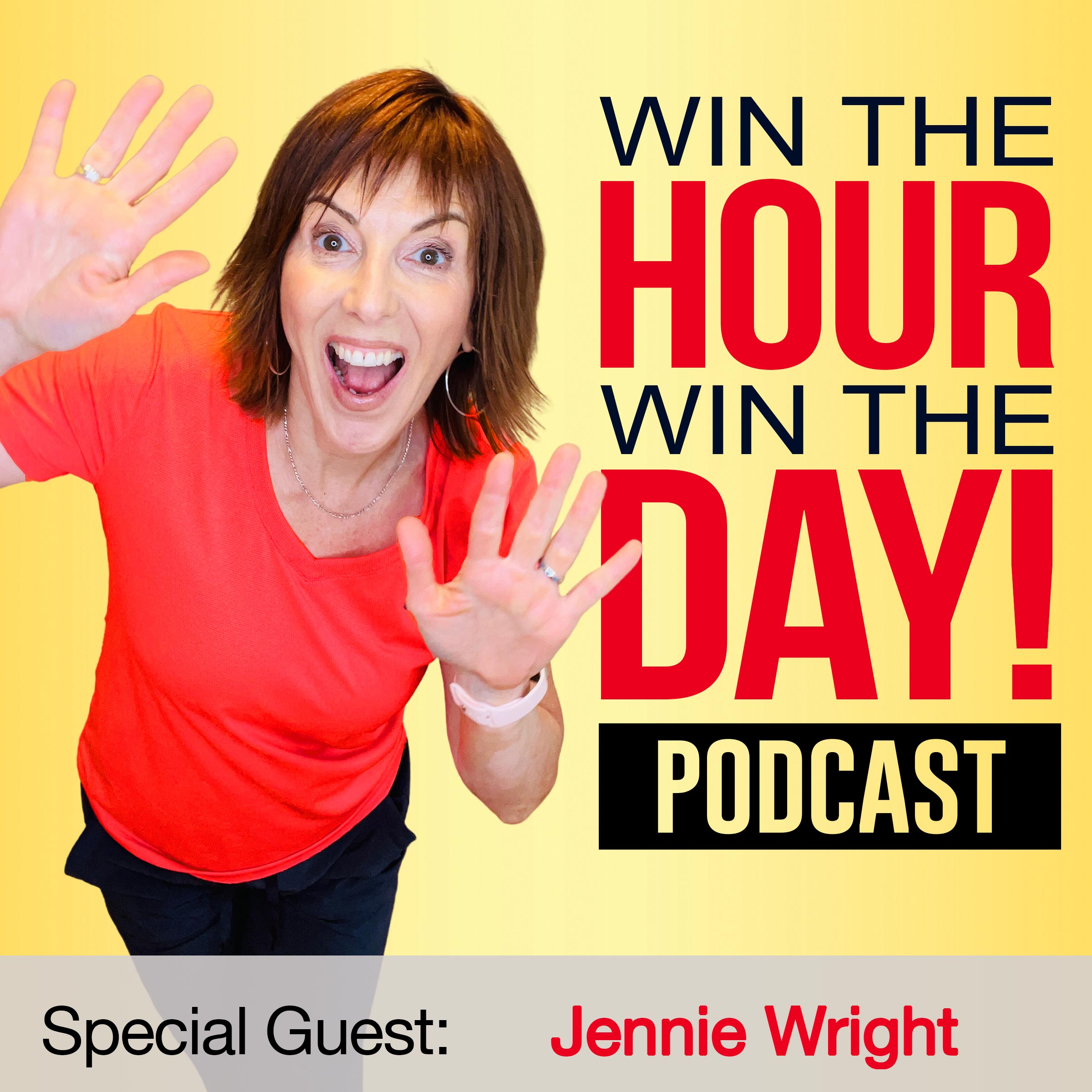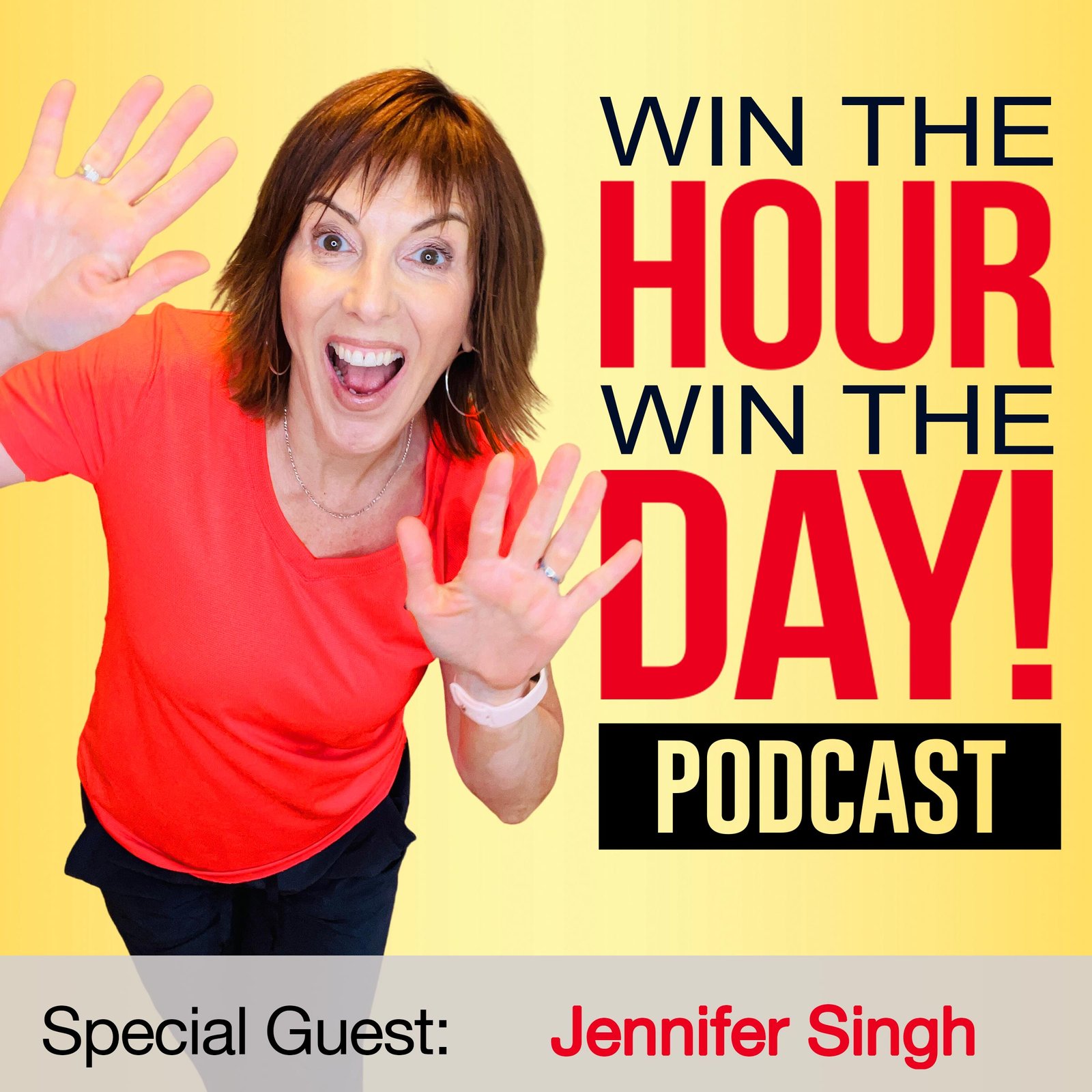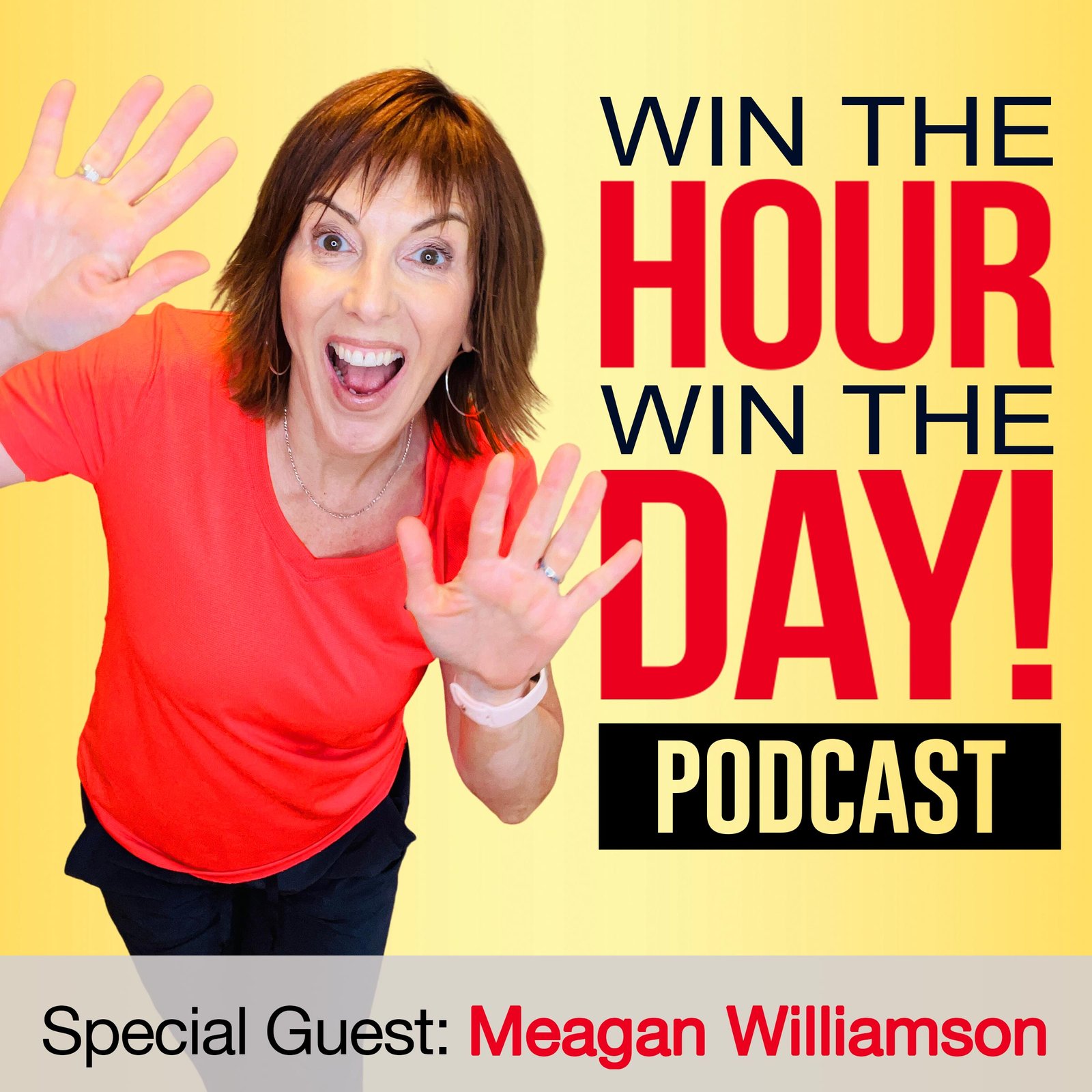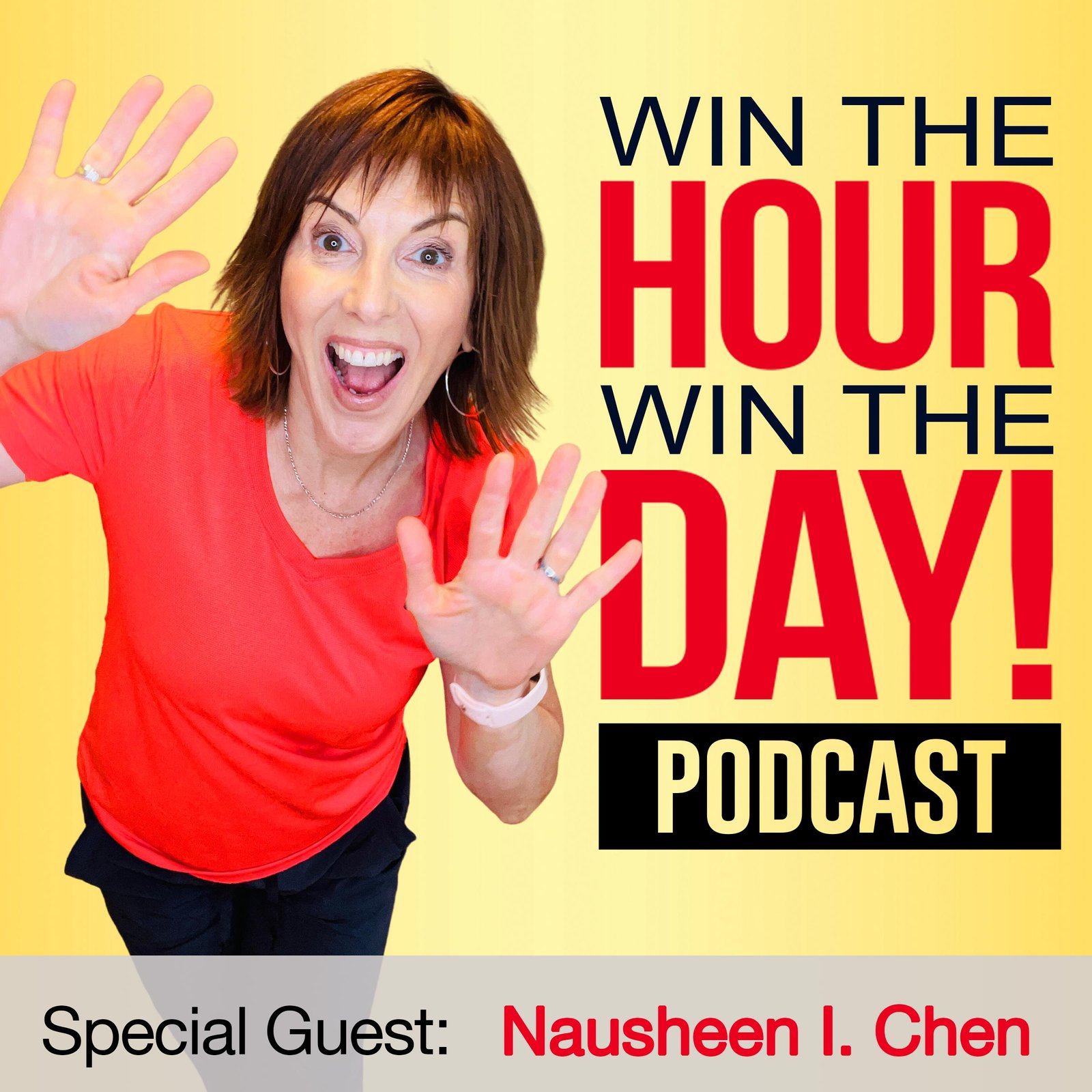Episode Summary This week’s episode of Win The Hour, Win The Day Podcast interviews,...
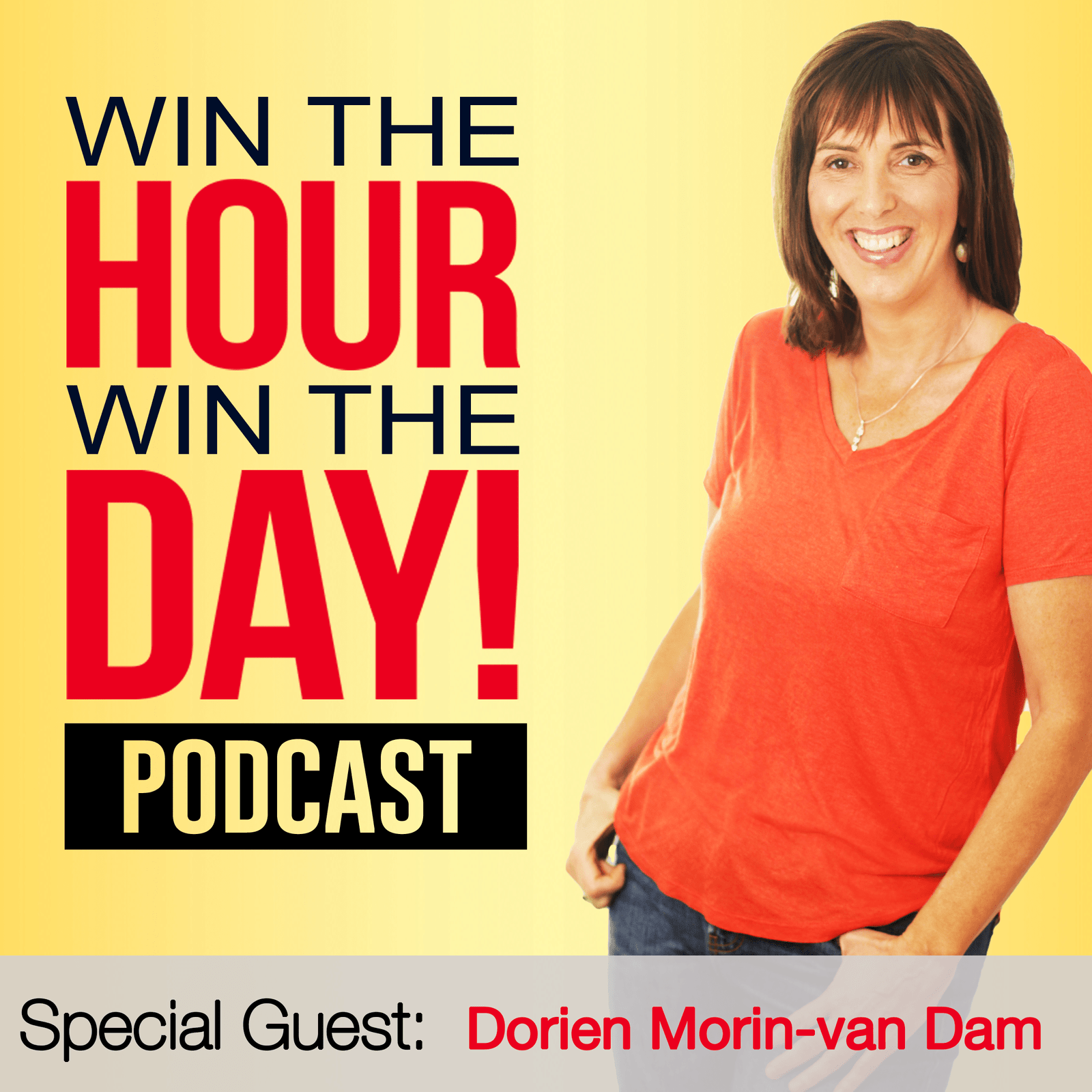
Are You Ready For Your Next Big Win?
Know your entrepreneur personality and I’ll take it from there!
Recent Podcast Episodes
Slow Down to Speed Up: Repurpose Video Content with Jeff Sieh
Episode Summary This week’s episode of Win The Hour, Win The Day Podcast interviews,...
Virtual Assistant Hiring Secrets: Leadership that Drives Success! with Wally Malaque
Episode Summary This week’s episode of Win The Hour, Win The Day Podcast interviews,...
Boost Your SEO: Leveraging Pinterest as a Powerful Search Engine! with Meagan Williamson
Episode Summary This week’s episode of Win The Hour, Win The Day Podcast interviews,...
Transform LinkedIn Posts into Binge-Worthy Stories with David Young!
Episode Summary This week’s episode of Win The Hour, Win The Day Podcast interviews,...
Leading Virtual Teams: Angelene Balansag on Empowering Workspaces
Episode Summary This week’s episode of Win The Hour, Win The Day Podcast interviews,...
Unlock Virtual Event Success: Michael Tucker’s Expert Strategies
Episode Summary This week’s episode of Win The Hour, Win The Day Podcast interviews,...
Power Your Podcast: Key Guesting and Marketing Tips! with Kamie Lehmann
Episode Summary This week’s episode of Win The Hour, Win The Day Podcast interviews,...
Unlock LinkedIn Success: Harness Sales Navigator Today! with Perry van Beek
Episode Summary This week’s episode of Win The Hour, Win The Day Podcast interviews,...
Boost Your LinkedIn Impact with Video Communication Tips! with Troy Hipolito
Episode Summary This week’s episode of Win The Hour, Win The Day Podcast interviews,...
Master Communication and Power Persuasion Skills with David Tyler
Episode Summary This week’s episode of Win The Hour, Win The Day Podcast interviews,...
The Power of Storytelling: Master Video Branding with Elin Giczi
Episode Summary This week’s episode of Win The Hour, Win The Day Podcast is...
Selling Sincerely: Blake Binns on Real Connections in Sales
Episode Summary This week’s episode of Win The Hour, Win The Day Podcast is...
Preventing Burnout with Smart Work Tools! with Kris Ward
Episode Summary This week’s episode of Win The Hour, Win The Day Podcast is...
Master Social Selling: Heidi Medina’s Strategies for Engagement
Episode Summary This week’s episode of Win The Hour, Win The Day Podcast is...
Boost Productivity and Master Storytelling! with AmondaRose Igoe
Episode Summary This week’s episode of Win The Hour, Win The Day Podcast is...
Master Video Marketing: Top Tips for Entrepreneurs with Dan Bennett
Episode Summary This week’s episode of Win The Hour, Win The Day Podcast is...
Boost Your LinkedIn Strategy with AI Tools for Enhanced Productivity! with Joe Apfelbaum
Episode Summary This week’s episode of Win The Hour, Win The Day Podcast is...
Mastering Personal Branding with NLP Techniques! with Olesija Saue
Episode Summary This week’s episode of Win The Hour, Win The Day Podcast is...
Innovative Lead Generation and Email Automation Secrets with Jennie Wright
Episode Summary This week’s episode of Win The Hour, Win The Day Podcast is...
PR Strategies for Diverse Entrepreneurial Impact! with Jennifer Singh
Episode Summary This week’s episode of Win The Hour, Win The Day Podcast is...
Convert More Clients on LinkedIn with Richard Moore
Episode Summary This week’s episode of Win The Hour, Win The Day Podcast is...
Master Business Growth on Pinterest with Meagan Williamson
Episode Summary This week’s episode of Win The Hour, Win The Day Podcast is...
24/7 Sales Boost: Video Marketing Secrets with Alex Sheridan
Episode Summary This week’s episode of Win The Hour, Win The Day Podcast is...
Master Public Speaking Tips with Nausheen Chen!
Episode Summary This week’s episode of Win The Hour, Win The Day Podcast is...
Make Anything You Do,Better-FASTER! with Dorien Morin-van Dam
Episode Summary
Dorien Morin-van Dam talks to us about Agile Marketing and it’s a game changer. The concept is simple but powerful. And it’s something you can easily dive into today!
Learn
-the basics of Agile Marketing and why it’s been the secret weapon for software development companies
-how it can increase your productivity
-why you need to use it for your social media ambitions
And MUCH more!
W.I.N Time Back Quiz
https://bit.ly/WinTheHourWinTheDayScoreCard
Win The Hour, Win The Day! www.winthehourwintheday.com
Podcast: Win The Hour, Win The Day Podcast
Facebook: https://www.facebook.com/winthehourwintheday/
LinkedIn: https://www.linkedin.com/company/win-the-hour-win-the-day-podcast
Win The Hour, Win The Day Winners Circle: https://winthehourwintheday.com/winners-circle-masterclass
You can find Dorien Morin-van Dam at:
Website: https://www.moreinmedia.com/
Email: dorien@moreinmedia.com
LinkedIn: https://www.linkedin.com/in/moreinmedia/
Facebook: https://www.facebook.com/MoreInMedia
Win The Hour Win The Day
https://winthehourwintheday.com
Dorien Morin-van Podcast Transcription
START[00:27:33]Kris Ward: Hey everyone. Welcome to another episode of Win The Hour, Win The Day. I am your host, Kris Ward, and I’m super excited. We’ve got Dorien Morin-van Dam in the house and she is so good. She is one of the extremely few people that I have brought back for a second time.
She was with us way in the beginning, and she has got some fantastic nuggets to just change our whole view on everything today. Welcome to the show, Dorien.
[00:28:04]Dorien Morin-van: Thank you so much. I’m so excited to be back second time. It’s always fun to come back and talk about marketing, right? New things. What’s happening in my world. What’s happening in your world. Absolutely.
[00:28:16]Kris Ward: Yes. And we’ve had some really interesting conversations, I thought, okay, you gotta come back. So what we’re gonna talk about today, and I wanna dive right into it is you are passionate about agile marketing, correct?
[00:28:31]Dorien Morin-van: That’s right. I discovered it about three and a half years ago. I got a client who was an agile coach and I knew nothing about agile. So I started creating social media content for Agileists and for other people who I had to dive in and then about a year in, she sends me an article, my client, she says, by the way, you can use agile for marketing. And I was like, wait, what?
[00:29:03] And that started to journey for me. I was like, that totally makes sense. And I don’t know. And now I can tell you and I can tell everybody else that’s listening. You can also use agile for anything that you wanna plan. Plan a wedding, plan a trip, parenting, the agile mindset and all of that can be applied to anything in life.
[00:29:25]Kris Ward: Okay. So let’s just get to the good stuff, because we’re all focused on our business, the heck with the rest of stuff. Let’s dive in. So let’s talk about agile we’re in a couple minutes. What is agile marketing? What’s it based on?
[00:29:39]Dorien Morin-van: Okay. It’s based on the agile manifesto, you can read it at agilemanifesto.org. It’s a document that was put together in 2001 by 17 software engineers. It came from the software development area where they wanted to produce a product, a minimal viable product faster, better. Okay. And it’s based on having different iterations. When you produce a product, you wanna put a minimal viable product to market, as fast as you can get feedback, make it better, get more feedback, make it better.
[00:30:09] Right. And so now that has kind of blown over to other areas of these big companies, right? Software development. They had an HR department that a finance department, sales department, and then it came to marketing. So not everything in that agile manifesto can be applied to marketing, but most of it can.
[00:30:26] And it all starts with having an agile mindset. You need to have an agile team, but each team member has to have that agile mindset because it’s not about doing agile. It’s about being agile and that’s..
[00:30:41]Kris Ward: Okay. Okay. Hold on. I’m gonna jump in here cuz you’re saying some pretty, I think important things that I wanna unpack as we go.
All right. Yes. So what I would say is we kind… I think most of us do understand this. We do understand in the software industry, they are notorious for getting a minimal viable product to market. And we talk about that all the time as like, okay, you know what, like we’re… and then we, the consumers we’re updating whatever the new features or, but more often than not, we’re rebuying the second stage of that and paying more and yet.
[00:31:16] As entrepreneurs, small business owners, all that stuff. We get caught up in the web of admin trying to get everything just so right. And I know I did this, especially in the beginning years of my business thinking, oh, I have to look professional and I have to get it all. So, and by the time I get it all.
[00:31:31] So, you know, as I talk about now with what we do, everything is about getting ideas to execution, ideas to execution. So by the time I bubbled around and got it all, just so first of all, four or five other people would be to the market quicker than me. And secondly, then you get feedback and you’re like, oh, I thought they wanted this, but they want that.
[00:31:50] So, you know, I’m not my end user. So what a waste of time that was so we understand the concept, but I think what you’re now doing is you’re bringing it to the forefront with a framework saying, let’s just stop talking about that in theory. And let’s put things into play that we can build around. Is that correct?
[00:32:08]Dorien Morin-van: That is correct. And instead of building a product. We’re building a piece of content. Okay. So instead of talking about building a car or building a piece of software or a new pair of jeans or an iPhone, right. We’re talking about doing a blog post, a video series at an event, or even a podcast. How can you make that process agile? And that’s what I’m talking about.
[00:32:31]Kris Ward: And it’s really interesting to me, cuz I will tell you, I think for me the most freeing thing that happened, I would say in the last six months is I started putting content on TikTok. And I don’t know what about it is, or maybe it’s the volume or maybe it’s the shortness of the videos or whatever.
[00:32:49] Or maybe it’s a community. I found them a little bit more forgiving and maybe cuz you know, they want if the world’s perfect place, I encourage you to post several times a day. And so all of a sudden I was under the mindset now of the more times you get to bat, the more you’re gonna hit.
[00:33:05] And so instead of trying to do videos that are good and put out one per day or something, if you’re putting out three per day, you’re just getting feedback quicker. And so I was much more forgiving with myself than I had ever had before. Cuz I think even on LinkedIn you’re like, oh, okay, I gotta get this right.
[00:33:19] You know, put shoulders back, be professional, but it’s a real game changer. And it’s freeing if you understand now, I think maybe with you giving this a more sophisticated word during that, all of a sudden we’re like, okay, we can buy into the philosophy because we should have all known better sooner, really.
[00:33:39]Dorien Morin-van: Right. No, absolutely. The example I use is say you go to a three day event, right? And you’re the marketer that’s tasked with getting content at this event. In the olden days, or maybe you’re in a traditional marketing agency, or maybe you are, that’s how you were raised, or maybe that’s how you run your business.
[00:34:00] You send somebody there, you go to a trade show and you say, take some pictures. So next week we can talk about the trade show, right? That’s kind of how a lot of us do it. What you should be doing is giving your marketers, the person who are on the floor permission for those stories, for those reals, for TikToks to post in real time.
[00:34:19] Cuz that’s the first iteration you then get feedback. You’re like, oh my gosh, where are you? We’re here too. Come on down. We’re gonna go out to dinner. We’re in Dallas, Texas. Mm-hmm , you know, you should go to this and you’re getting the feedback from your audience, from your online audience about what’s happening and more and more people will see your content.
[00:34:37] So that in the next iteration would be maybe tomorrow I do an interview with somebody who’s there, or maybe I’ll do a bigger video and post it to Facebook. But every time you post that content in that two or three day trade show period, you’re getting more feedback on what people want and what kind of content.
[00:34:56] So instead of sitting on that for three days and posting it next week sometime it’s over and done with. You’re right there in the midst of it and getting that feedback and getting the content that people want, because you literally can ask this or that, who should I interview I’m over here? Who is, who else is here that you know, what do you wanna see?
[00:35:14] You wanna see the latest innovations, right? And you go by them and interview them and go talk to people and show your audience that you’re first to market, which is what you were talking about, right? Instead of wait and sitting on it.
[00:35:29]Kris Ward: You know what so many things you brought up. So you are referring to like bigger companies that they send somebody like a marketer to a trade show.
And you’re doing that I suspect because this is where the origin came from coming from bigger companies. But as you know, us and everyone other you guys out there, we’re all small business owners, entrepreneurs. So the lesson is for us. So when we are at that trade show, when we are there, and I have to say too, after just talking to you about how free it is and how all this stuff, I’m much more liberated about.
[00:35:59] I have to say, when you gave me that image. I was thinking, Ooh, you know what? I still probably might think, oh, when I get home and I get organized and I go over my stuff and then at least I have, you know, a team in play. We’re all about getting time back. So I have strengths and assets that most people don’t have, but for most people, what would happen is you put it back, you come back to your office and then it just gets buried next week.
You might not get it out for two weeks, or then you don’t remember what is this note to myself or it’s not only are you not first to market, it gets diluted.
[00:36:32]Dorien Morin-van: Right. Yeah. For, for sure. And I’m a team. I do have an executive assistant and I do have VA, but when I’m out and about, I take those pictures and I post them, I post the reels.
[00:36:43] I post the pictures. I put that out there because it’s authentic. That’s the other part and people, and you get feedback, especially when you go to an event when you’re either attending a conference or a trade show or somewhere, if you, the business owner take those selfies with people, when you and I met Kris, do you remember? We took a selfie together.
[00:37:01]Kris Ward: I do. How could anybody not remember. Yeah. I actually walked up to you.
[00:37:07]Dorien Morin-van: Yes, yes, yes. Yeah. Yes. So we took that picture and I think at that time I probably held onto it for a little longer than I should have, but what I should have done is at the end of day one, post all the people I’ve met like 10 amazing people go follow them.
[00:37:22] Right. That’s what I would do now. You know, these are the people you wanna meet. If you’re here at this event, I just met 10 amazing people. You need to follow them to go find them. Yeah. And that’s what I would do. And that makes the content better, then people are gonna say, oh, well, there’s another person there you need to meet.
[00:37:38] And you have this conversation online and it’s better. And then at the end you can always repurpose the best content because that’s ultimately what we want. We want a blog. We want a YouTube video. But now you already know what content works best. Right? So…
[00:37:52]Kris Ward: Well, this is so simple and I find it embarrassingly profound for me anyhow, because I think, oh my gosh, you’re right.
And then not only if it, if I put that up, let’s say, when we first met, TikTok wasn’t either not around or very predominant for sure. I think was still musically. Right. And so what would happen is now you’re looking at maybe Facebook, I could have done that, but LinkedIn, I get, Ooh, no, it’s gotta be all polished.
[00:38:18] Right. But imagine now, if you put a picture up of us together, I’m tagged in and I start and people see, oh yeah, I know Kris, or I know Dorien. And all of a sudden, if nothing else, I’m gonna be thankful that I’m getting some attention or traction or all this other stuff on social media, which is what we all want.
[00:38:35] So it’s really a great way of establishing and making effective relationships. Like it’s the biggest compliment you can have is give somebody attention online. Right? So it serves on so many levels, I guess is my point.
[00:38:47]Dorien Morin-van: Right. And then, that’s where you are at an event, but say you are a solopreneur and you’re working with a vendor or I don’t know exactly what industry, all of the listeners are in, but you can also be very agile.
I have clients who I do coaching with and we’re coming up with content ideas together. One way that we’re very agile is we work in Google docs. Yeah. Because when we work in Google docs together, I can see which, what they write. They can see what I write. Yes. And so instead of waiting for a monthly meeting or a weekly meeting, I have found that the more I meet with them and the more I tag them and get them involved in the content, they take ownership.
So there is this thing that, and you might have heard of this is have you ever heard of the play, the rock game? Bring me a rock game, Kris?
[00:39:38]Kris Ward: No.
[00:39:39]Dorien Morin-van: Okay. So I used to play this with my clients. My clients would say, bring me a rock, right. It would be like, make me a flyer. I would spend three hours making a flyer would present it to them.
They’d go. Oh, Well, it needed to be a different size. So I would go back and reformat it. Oh, I really like my logo on it. That’s the old logo. Can you add the new logo? And then I present, I’d go, oh, you know, and that that’s playing the rock game, bring me a rock. They never set a goal. They didn’t set parameters. And so when you…
[00:40:06]Kris Ward: So there’s the idea that you would keep bringing them the wrong rock.
[00:40:09]Dorien Morin-van: Yeah. Because you don’t know what rock you’re bringing them because they just call it a rock. Right. And so the agile way would be to say, I want a rock. I want it to be round. I want it to be stripy.
[00:40:22] It needs to be glittery. It needs to be blah, blah, blah. And you give the parameters. And then when you deliver that, that’s exactly what they want because you know what they wanted. And so the agile way is then to go work together with people. So, that’s being agile, right? The other way to do it, instead of saying, I’m gonna bring you that rock today is said, let’s look for the rock together.
[00:40:45] Right. Mm-hmm and just find out. And then what I usually do is I have rock A and B, which one is the one that you like best? A, okay, we’re gonna put A, and we’re gonna make three versions of A. Now do you like A1, A2 or A3? And I’m using rocks, but it could be a flyer. It could be a podcast. It could be, you know?
And so that involves the client. So actually what I have learned when I’m agile with my clients is that I meet more often, but it’s more effective.
[00:41:14]Kris Ward: Yeah, exactly. Oh, my gosh. So I’m pretty proud of me at this moment, because this is how well we people in the Winners Circle, we talk to them about meeting with their team and when we help them hire, train and onboard. The only time it’s ever gonna fail is if you’re not meeting, we call them scrums.
[00:41:29] Little scrum is based on the book, scrum and you rugby and get the ball up the field, a mini little scrum. And to me that time together is not about supervising them and giving them work and checking out like the whole parentified archaic corporate thing. It’s about us collaborating so that, like today we were trying to combine something with our social media strategy.
[00:41:48] It was this plan for the calendar. And we were trying to combine a spreadsheet that we’re no longer using into something new. And that would be something we never would, they would never go off and do that by themselves because we’re creating, I don’t, we’re building something and I don’t know, is this gonna work?
What are we looking for? Okay. If we do it this way, what if you did that? So you have to do that together. So really proud that I think is our biggest strength is we are agile. So yes, not about me, but we talk,
[00:42:15]Dorien Morin-van: You are agile and scrum. Scrum is actually an agile framework. Did you know that? Yes, it is.
It’s scrum and Kaban. And so scrum is really time boxed and Kaban is not, but from again, they’re from the software industry. So when we talk about marketing, most marketers take a little bit from scrum a little bit from Kaban and they make it into scrum ban.
[00:42:39]Kris Ward: Wow. Cutting edge, cutting edge.
[00:42:42]Dorien Morin-van: I know they make up their own framework. So yeah, it’s really cool.
[00:42:45]Kris Ward: Okay. So we talk about being agile and we’re gonna talk about relentless improvements. So the next element of that is continuous curiosity.
[00:42:54]Dorien Morin-van:Yes. So there’s four elements to having an agile mindset. And they, the four of them are relentless improvements, which we just talked about.
[00:43:02] Continuous curiosity. You have to always be willing to learn new things. Always be curious, what’s the next new feature. What’s the next big thing in your industry. You need to be able to learn. You need to be able to practice, right. And everyone on your team, but especially the C-suite, you know, if you’re the owner, you need to have that curiosity, you can’t get stuck.
[00:43:21] If you’re stuck, you’re not agile. Right. The next one is team collab. And you just talked about that, you know, building things together and getting input from everybody. Every voice in the room needs to be heard really, really important. And then the last one, which is a really hard one to wrap your head around, but it’s a willingness to fail.
If you do not have a willingness to fail as a business owner, you’re not gonna meet success because you’re gonna stop trying. And so will your team, you’re not gonna be motivated to try.
[00:43:50]Kris Ward: Okay. So I think a lot of us have that continuous curiosity, cuz we’ve got that hunger we wanted. That’s why we are in business for ourselves. Cuz you just want this ferocious appetite to get to the next thing and your next idea. Right? So the team collaboration, that’s very interesting to me as well because I often talk to people about that and I’m really big on how do you give that team that, whether it’s one person, your VA or whatever, the support, the strength and the safety for them to have ideas because you can go around and say all the time, oh, I want somebody to have ideas or to take risks.
[00:44:25] I’m not looking for someone just to be order taker. I want you to chime in until then they have an idea you don’t like and you make a little face. Right? I often give this story that my husband used to. If he thought somebody was mean to me, or I had a hard day, you know, he would go and get me these little ice cream cones.
[00:44:43] I like, you know, from the corner store or whatever. And he’d walk in at eight o’clock at night and hand them to me and I’d be like, I don’t need this. Like, this is, I don’t need to have ice cream at eight o’clock at night. Right. This is not helpful to me. Right. But I ate it. Right.So what I said and what I did was different.
[00:45:01] So a lot of people would say, oh, we want risk takers and idea makers and all these other things. And then you go, well then there’s a social cue that, oh, whatever. So I think that team collaboration of setting it, up so like, look, we’re all about this is I think so important that it’s part of this process, because I think it’s the one that gets skipped over saying it, but putting them in a position where it’s encouraged and supported is very different.
[00:45:27]Dorien Morin-van: Right. And it’s really important to read the room and whether you’re a virtual team or whether you’re in the room with them to look at body language, especially, and to have everybody go around. And one is one practice, cuz we have agile values and principles and one agile practice that goes along with this team club is a daily standup meeting.
[00:45:55] And if you’re working, whether you’re remote or in person, it could be as little as a 15 minute meeting where everybody on the team answers three questions. What did I do yesterday? What am I doing today? And where am I stuck? And when everybody does that and talks about when they’re stuck, the team collab comes in, cuz it could be like, well, I’m stuck because I’m waiting for Jenny’s thumbnails for the videos.
[00:46:19] I’m video editing, but Jenny didn’t get me the thumbnails yesterday and Jenny goes, well, I’m stuck because my daughter was sick and I couldn’t finish that. But then Kris could come in and say, well, I have access to that same tool, Dorien I’ll help you. So you can get unstuck and move on with your video editing that’s team collab.
But that happens when you have that daily check in that daily standup meeting where everybody answers the same three questions. What are you yesterday? What have I plan to do today? And where am I stuck? And that’s piece is really important.
[00:46:50]Kris Ward: Yeah. And again, I’m gonna pull you back a little bit because we’re talking to people with much smaller teams, but even with I argue that with a smaller team, whether it’s one person or two, or maybe even three, that’s even more important.
[00:47:02] And again, I guess I’m really feeling like it’s really, I think it’s really great when sometimes you know, that you’re on the right path. It’s sort of like if you’re driving and you think you’re a little bit lost and you think, oh, I should slow down. Cause I don’t know if I’m on the right path here. I’m super excited because since I don’t know, over the last 10 years, like right from the beginning, I always ask them, what’s your strength?
[00:47:21] What’s your struggle. Right. So I’m halfway there because you’re right. The struggle told me like, oh, well, I’m trying to get this done. Wait, let me see that, oh, we don’t need that for two more weeks. You know, it just unclogged the system. So super important. So team collaboration. Fantastic. Now probably the one that we can talk about all day long, but it’s still a little bit more gut wrenching. Willingness to fail, willing to fail. So tell we’ve all heard it. Yes. Fail quickly. All that stuff. What’s… tell me, remind us again, why we really have to embody that.
[00:48:00]Dorien Morin-van: Because we have to try new things. Yeah. If you are not willing to test, especially in social media, in marketing, in business, if you’re not willing to test a new product, a new idea, you’re gonna get stuck and your competition’s gonna go
[00:48:17] past you, but even if you have a team of one or two or three, which is my team is very small. If I don’t let them fail and try things that they come up with, they’re gonna stop being creative. They’re gonna stop being productive and they’re gonna stop being motivated. Those are the three things: motivation’s gonna go down.
[00:48:36] Productivity and creativity is gonna go down. So in order for them, the willingness to fail comes from within. But what do you call it? That I’m allowing them to fail comes from me if I am their manager, or if I’m the CEO of the company, right. That you, everybody has to be able to not just be willing to fail, but has to be allowed to fail that failure.
[00:49:02] And almost even encouraged. Right to try new things. Absolutely. Yeah. And I wanna just make a point of the daily standup. I started that practice by myself every day. I would do this, a daily standup meeting at my standing desk by myself. I did this yesterday. I’m gonna do this today and here’s where I’m stuck.
[00:49:20] And usually when I’m stuck, I’m gonna eat that frog and do that first thing. Or I’m gonna make that phone call. I’m stuck because I got too many things on my plate or I’m stuck here because I didn’t do this yesterday. Right. Mm-hmm . So even with yourself being honest with yourself, that’s how I started. Just be really being honest and having that meeting. Just standing here going, you missed this, you dropped the ball Dorien, you dropped the ball.
[00:49:42]Kris Ward: So interesting. Okay. I read a book once and you know, both of us, we have the luxury. We both have standing desks, so it doesn’t really weigh heavily on me, but what their argument was, if you couldn’t have a meeting where you could stand the whole time, the meeting was not done well.
[00:49:56] Right. So there’s that then it’s really interesting to me as well. I’m right now in reading the Beso letters of about Amazon and how it all unfolded and their interation like they’re so very clear on things that failed that brought them to the next place. Right that they’re like, okay, this didn’t work.
[00:50:16] They tried to, apparently. I missed the boat on this one. I guess it failed so quickly, but they were trying to have a section where you could bid on like eBay. Well, that didn’t work. And then they tried a different version of having consumers, Amazon products, and then people that could sell on Amazon, but weren’t Amazon themselves.
[00:50:34] Well, that was a separate section that failed. And then they brought it all together in the marketplace, but they’re very clear on how their biggest strength they feel is having, they’re saying, oh my gosh. And we’ve got 6,000 employees and we want 6,000 really unique brains that come to it, not the person up in the office, isn’t on the floor trying to come up with ideas.
[00:50:56] So they credit, I guess what you’re talking about here, your formula and you know, what you’re so passionate about, they credit all this type of stuff to their evolution, to their strength and how they became like the fastest growing company in the history of time. It also reminds me, this is a really quick example.
[00:51:16] I remember when I first started this podcast and I was putting the cover and I put it in and I think I’ve talked about this on the show before I put it in a Facebook group and it was a very large group. And normally I’d be like, okay, I’ll just come up with a cover. But I was trying to be a big girl and I put it in the group and said, okay, gimme your feedback.
[00:51:33] They ripped a threat it was just like brutal. It was unnecessary. And everything I wanted to do was just take it down. And I was like, okay, nevermind. And then somebody said to me that was much more like really accomplished, said, Kris, aren’t you happy that you found that out in two hours instead in two months.
[00:51:56] But at the time I felt like I just got kicked around a lot, but that was like, oh, okay, well, where else would I have gotten that feedback and that volume with that passion. So we did change the cover. Clearly they were right. I just felt they could have been gentler about it, but you’re right. Fail quickly. Get it done. Be agile, move on. And don’t own the hurts. Just grow from it really quickly.
[00:52:16]Dorien Morin-van: Absolutely another famous person who did that. And Henry Ford, there’s a quote by him that says if I’d asked the people what they wanted, they would’ve said faster horses, right? Yes. And he failed twice before in 1904.
[00:52:30] Finally came out with the model A, you know, that’s it, he failed. He didn’t do what he set out to do originally, but then he was a successful pioneer entrepreneur and a builder. So yeah, he failed. There’s lots of examples like that, but people usually don’t know what they want. And so if you have that vision, if you tell your team, they can fail.
If you tell yourself and you’re willing to fail and pull yourself back up, that’s when you’re agile. So,that’s you’ll when you’ll be successful, because those that don’t try.
[00:53:04]Kris Ward: Yeah. Okay. So then, we just have a couple minutes left tying this into content, which is very interesting to me, cuz sometimes way back in the beginning, the first time I use like a social media, whatever platform, organize, whatever, content manager
[00:53:19] so you can get seduced into writing some copy and then go, oh, this platform rotated for me and come out every three weeks, whatever. Right. And all of a sudden you’re realizing, oh, I’m reading that that should have been better or that’s outdated. What have you? So I do think there’s definite problems with that.
[00:53:32] So when you talk about content under the umbrella of content and social media, what does that look like for you again, I guess just as you are, when you’re something you’ve got, you’ve got your form, you’ve got your stuff in the queue that’s gonna go out. But if something comes up just being raw with it and adding it to the mix, instead of putting it through the process,
[00:53:51]Dorien Morin-van: Absolutely. Okay. Absolutely done is better than you than perfect. So, I use the scheduling tool and it’s literally drag and drop. So I might fill, say, especially on LinkedIn, which is my favorite right now. So I might fill it up with three or four posts for the week. But then if I wanna post something, I’ll just go into the stool.
[00:54:14] I’ll drag, whatever was supposed to be posted today to next week or next Friday or whatever. Okay. And I’ll post something on the go and you have to be willing to do that. Right. And then the other thing I just, I’ve been doing this like instead of rewriting and like come up with one piece of content and make it amazing.
[00:54:33] Right. And spend all this time. Why don’t you think of one concept you wanna explain to somebody write one description and then write it, rewrite it four more times you would have five different ways to say the same thing. And you can post all of them. And then after three or four months when you’ve posted them, see which resonated with your audience.
[00:54:55] Right. You’re saying the same thing. Yeah. Say you wanna teach you say, you wanna talk about, you know, win the hour, win the day, you know? Yeah. And explain the podcast who it’s for. Right. Five different descriptions, five different ways, you can click through, you can measure it and see what resonated with your audience.
[00:55:11] Right. That’s being agile. That’s using the content for that. And I think it’s really important to point out too, that to try things, you actually were the one who commented on that, where the LinkedIn experts say you should only post a link in every 24 hours. Yeah. And you know, we follow this rule and then I one day had posted something and then something came up.
[00:55:36] I’m like, this is important. I posted it. It kind of did okay. And then I saw an amazing share. I shared it. 32,000 people reach. On this one thing that I just saw it. I knew it. I was agile. I’m like, this would resonate with my audience. I’m gonna share it posted three times in one day. Totally broke the rule.
[00:55:57] That’s okay. I don’t know if I can replicate it, but that’s okay too. Right. There’s always a learning lesson in this, but that’s the part of being agile. Don’t be so rigid. Here’s the thing that I’m gonna tell you. Definitely plan, definitely make a strategy. Your tactics can change.
[00:56:13]Kris Ward: That is a really powerful point. And also, I think too, you get seduced into being this really obedient rule follower and every platform. And then, half the time you hear stuff, you’re like, I heard that who says that was valid anyhow. Right. So you you’re totally right. It’s like, I was like, I read that post and I was like, oh my gosh, I didn’t know.
[00:56:32] It was only supposed to post it once a day because often I post two, like there might be a video and written content and then now I’m getting caught up in, oh, am I supposed to be following that rule? So I guess also the agility buys into be agile, even when you’re on different platforms. You know what?
[00:56:48] That was a really powerful lesson now because of people like you, we might find out in three months from now, oh, you know what really does well on LinkedIn? Really, this is when you do this because people like Dorien have figured it out. And she did that and LinkedIn paid attention to and said, you know what?
[00:57:03] Our users want this. So this is our new rule. So being agile and not getting caught up into this falsehood of a veneer professional look, and then thinking that you have to follow the rules of engagement that half the time, you don’t even know where they came from anyhow.
[00:57:19]Dorien Morin-van: Right. And this is the curiosity part. Continuous curiosity, always learn, always test, always be on the lookout for new things. Why are, why is this working so well, all the new trends that’s happen that are happening on TikTok and Instagram and with the reels mm-hmm, you don’t have to follow everything, but be curious and see what’s happening.
[00:57:39] Right. Make those inferences on what’s happening on TikTok right now. I know you see it to those side by side videos where it’s the same person talking, but they have two personalities. Yeah. People love that, right? Yeah. Yeah. It’s the Erica, the lawyer and Erica, the whatever. And she’s talking to herself, that’s a trend that’s working right now in three months, who knows.
Right, right. So don’t put all your eggs in that basket. Yeah. If it works for you. Great. But go, go, go test things that work for you. Be unique, be different. Break the rules.
[00:58:10]Kris Ward: Yes, yes, yes, yes. Okay. Dorien, you are a treat. There is a really good reason we brought you back. Where can people find more of your excellence?
[00:58:19]Dorien Morin-van: LinkedIn is where I am most. I do hang out on Facebook. I’m a community manager, so I do, I am active in Facebook groups and feel free to send me a Facebook friend request. I absolutely accept those. But I love LinkedIn. Dorien Morien-van Dam on LinkedIn, orange glasses. You’ll recognize me. My company is more in media and you know, check me out and just send me a note. When you connect with me on LinkedIn and say, “Hey, I heard you on with Kris. I would love to connect.” That way I know you’re not just spamming me.
[00:58:51]Kris Ward: Yes, yes. Yes. Well, thank you so much. And everyone else, we will see you in the next episode.
[00:58:58]Dorien Morin-van: Bye everybody. END[00:59:00]
